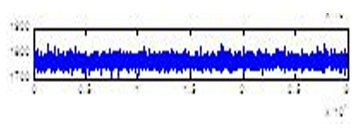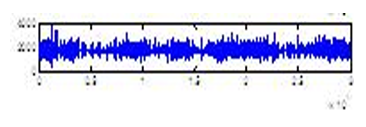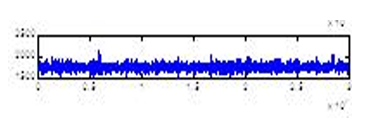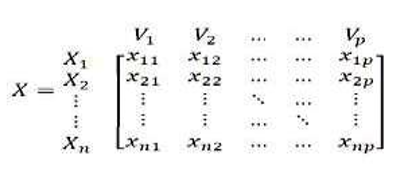Introduction
One of the majority of the widespread neurodegenerative disease that seniors (above 60) practice, Parkinson or Parkinson`s disease (PD) is a distressing diagnosis distressing roughly two of every 1,000olders. Presently, even though there is no cure plus present P D treatments assist improve merely symptom-features before and more willingly the disease’s progression, and therefore, new expectation lies in new study paying attention on brain`s neuro protection. P D, the causes of which are indefinite, is a continual, progressive brain disease which belongs to a larger class of syndromes referred to as movement disorders. In P D, one particular population of brain cells-those which generate a chemical-messenger termed dopamine develop into damaged and are mislaid in due course. The breakdown or malfunction of these brain-cells reason circuits in the intellect mind to function peculiarly, and those anomalous and irregular circuits upshot in movement tribulations.
Scientists have found that, in various cases, the occurrence of P D emerge to be periodic or arbitrary-haphazard, while some risk factors discovered and classified amid the most being age, followed by environments and genetics. As genetic risk factors being definite and distincted, for Parkinson disease it is absolutely not hitherto so far lucid. However, most of the scientists do think it is an amalgamation of environment and genetics. A number of scientific-researchers think that the mixture of genetics and atmosphere may in fact accelerate standard aging path-trajectory. Some researchers say that if each-person lived to be 120, we all would have Parkinson disease or Alzheimer’s that this is an aging brain and that somehow the trajectory has accelerate. So much research has been done but scientists are moderately and reasonably not sure on it. We do identify and recognize that there must be at some point or lack of function of these dopamine cells at some point in life; however we are unsure where it is or for how long it goes on. The near the beginning untimely signs and symptoms or syndromes of the illness might aid us comprehend the improvement of the illness malady for the reason that it is in excess of just these surplus dopamine-cells in the human-brain; it influences other cells too that we are imparted training and skills and also daily. Further, large number of older-men than women are distressed by P D plus supplementary risk-factors appear to be public natives who live in urbanized industrial countries or in a pastoral-rural (countryside) environment, and the rural environment has been linked to possible exposure to pesticides is another theory.1
The standard period of P D onset is a propos sixty, plus the hazard enhances by means of epoch. A hypothesis, i.e., theory proposes that the disease progression starts elongated and then protracted prior to symptom-features develop into and then turn into apparent plus that a juvenile, further artificial or synthetic brain is equipped and capable of balance and function moderately and generally designed or intended for some duration and internal moment. Human-brain is an exceptionally, exceedingly and extraordinarily multifaceted compound-organ also probably can transaction resolve a quantity of tiny blips in the system; though, the epoch process might lower the capability to balance, recovered numbers of dopamine neural-cells are vanished, plus model disease symptomatic-features appear and become known.”
Symptomatic-features and diagnosis
Human movement and control problems are an archetypal characteristic-sign of Parkinson disease can also fluctuate in the midst of those individuals-persons in occurrence and dominance and also sternness. The disease might contain one or further of these symptomatic-features, a few somewhat vaguely not as good as shoddier than others per capita. Its motoric-symptoms consist of dominant tremor, essential tremor, Bradykinesia (akinesia), postural instability, and rigidity.
This malady also linked in the midst of axial symptoms include freezing-of-gait (FoG), postural instability, trunk posture variations, and dys-arthro-phonia, contain a considerable collision on patients' quality-of-life (QoL). Furthermore, these symptomatic-features are scantily receptive to dopaminergic-drugs and operational methods. Yet, the perceptive of their physio-patho-logic (PPL) ideas and motives, underpinnings and equal, mutual reciprocal and shared interconnection is wanting, in conjunction with certified - legalized methods for the objective and quantitative measurement in clinical practice.
More importantly a logical and methodical evaluation of the literature on medical modalities of these signs and symptomatic-features likely essential for demonstrating and signifying the top level medical administration, plus novel therapeutic approaches based on new drugs, rehabilitation, technology-based assistance, meta analysis, or different induced electrical stimulus-modalities.2 Primary signs and manifestations of Parkinson`s can be so delicate and restrained that P D subjects over and over again simply error them fault them for features of typical-aging. The symptomatic-features might be in fact truly understated at the outset #]. Somebody might observe or perceive that their scribble and script gets less significant, that their hands begin to tremble, that they may contain new complexity footing-up, or that they are a diminutive shaky or sluggish. At the moment, the majority of those things are somewhat you might think would occur as you become lethargic and also becoming-older, however what begins to ensue is they grow to be increasingly poorer plus shoddier, also they begin to influence every day actions and behavioral activities, such as speaking-talking, walking, eating, or understanding a daily news-paper. At that juncture, that is as subjects habitually begin to visit the clinicians. In addition to these, some other commonest signs which are frequently herald the motoric-features of Parkinson`s together with dilemma such as apnea means tribulations during sleeping, some variations in sagacity of aroma, tiredness(fatigue), restive-legs, and risk factors, like hypothyroidism, diabetes, sometimes sugar as well and all these leading to constipation.
Usually, Parkinson disease is conducted through presenting signs and syndromes, i.e., feature-manifestations and there is no blood or by means of any other way to test to diagnose this malady. At the moment some experimental-investigation around in to what these untimely signs and symptoms might imply and if that may possibly aid envisage an enhanced prognosis and clinical and objective and management of the malady.3
Even if one might think a imaging the P D brain possibly doing well and also flourishing to detect the region of the Parkinson diseased subthalamic nucleus in the sustantia nigra, in a scan like functional magnetic resonance imaging (fMRI), which confirm anatomical-structural variations in the brain of Parkinson`s, they emerge standard in PD for the reason that these cells that disappear or die out are a very scanty, hitherto they contain a massive collision on the PD subject’s movement.4
Besides, findings can also be convoluted and problematical by the verity that supplementary diseases might contain features that are akin to those demonstrated in the midst of this malady. Following the elder`s on medication for their features reduction, a additional perfect prognosis be prepared. Neurodegenerative might be complicated to prognoses’ the findings in the beginning, but the characteristic model features of neurodegenerative disease plus reaction to drugs like livodopa alpha synuclein are empathetic-factors.5
Medical management – past and present
The stability and steadiness of medical management for PD dealing with PD is very individualized personaged for the reason that older adults can contain anecdotal (unreliable) degrees of features, plus no two subjects respond approximately the identical means. The platinum-set, i.e., gold standard test for treating PD, which has been used for decades long as its main medication, is Levodopa (the metabolic precursor of dopamine). A type of dopamine-replacement therapy, it is a compound that is naturally found in plants and animals, and it’s a precursor to dopamine. Noting that it is typically given with another compound called carbidopa and presently with the alpha-synuclein to guarantee its capacity to cross the blood-brain barrier and get into the brain. Whilst it gets into the brain, the brain cells convert L-dopa into dopamine, and that reduces the tremor and some of the motor signs and syndromes and allows the PD subjects to lead reasonably ordinary lives.6 However, one may note here that the L-dopa does not aid through balance and other non-motoric feature manifestations. But, that L-dopa can build its own tribulations. One thing that happens with L-dopa is that, as P D subjects are on its medication for a longer period of time, they establish side effects called “dyskinesias” that are sudden in-voluntary movements, noticing that they might influence older-adults quality of life (QoL). Imagine you are containing actually tough inflexible-time walking and L-dopa drug makes it better, but suddenly you get these very strange movements. One of the challenges facing therapeutic development for PD is discovering the means to improve motor function and decrease involuntary movements as sustaining QoL for the personage and on condition that as full a range of motion as possible.7
There are diverse categories of dopamine-replacement drugs that, by targeting different parts of the dopamine metabolic pathway as L-dopa does, increase the production of dopamine. Compounds such as Azilect, a monoamino oxidase B inhibitor, can block the degradation of dopamine, and still others enhance the activity of dopamine at its receptor (a dopamine signal). All these drugs enhance dopamine signaling in the brain to assist the damaged-circuits primly and meticulously.8
A different category of drugs are employed for instance anxiety, depression, and ortho static hypo tension to steadiness further brain chemicals which are exaggerated and pretentious also following the dopamine cells die, plus there is also a third class-of-drugs which will distress the non motoric-symptoms subjects through P D might experience.9
For subjects whose signs and syndromes are austerely and modestly progressed by medication, deep brain stimulation has been executed and can be a triumphant management for various P D subjects for the reason that it might decrease the must for medicine prescription and progress “dys-kinesias”. Latest verification advocates that D B S considerably and greatly progresses movement plus QoL within P D subjects. Discussion through a neuromedical doctor /neurosurgeonis indispensable to decide and verify whether this nruro-surgical-procedure is the best strategy for a personage P D subject.10
New Hope in Neuroprotection?
Although several treatments and medications are being utilized for older adults with PD, all the current medications work on managing symptoms, but none can stop the disease’s progression. New research into neuroprotection is trying to change that. Neuroprotection is where research is headed right now because L-dopa, as far as we know, does not stop the progression of the disease. None of the drugs that are available stop the progression.11 So there is extensive effort in this area right now in both basic research and clinical trials.12 For brain`s neuro protection, the transdicscipline scientists looking down novel avenues for curing, for instance, dietary supplements and drugs which have been employed in the management of other diseases. Such as, quite a few ongoing enduring experimental trials are investigating the possessions of creatine, that is normally employed to construct muscle, and co-enzyme Q10, which works by cellular structures referred to termed as mito chondria, the power plants of cells, to wipe some detrimental and risky substances which are generated if the mito chondria are not functioning to capability and competence. For instance, proviso a power plant were liberating destructive chemical hooked on the air, coenzyme Q 1 0 shall function as behave as a riddle-filter to thwart this as of occurring and keep the atmosphere surroundings lucid, letting those approximately to respire inhale better. In primate rhesus monkeys the two amalgams are neuro protective also highly stands for in human-subjects, hence there is momentous spotlight on employing nutritional supplements and drugs that have been employed for further diseases that in rhesus monkey- models contain a good result and also possible guarantee of brain`s neuro protection for preventing the progression of P D and isradapine is a good example of complex and composite scientists that are presently examining. The calcium-blocker classically exploited to manage lofty diseases such as heart. High blood pressure (hypertension) is a widespread constraint and situation in that the long term force of the blood against the artery walls is high enough that it may eventually cause health problems, such as heart disease.
A scientist has observed that the isra-dipine makes and rejuvenates old dopamine cells young over as a result of changing the pattern of statement of these cells through brain-circuits. They also try to determine whether isradipine and alike composites-substances shall progress the function of dopamine cells plus offer a novel treatment for Parkinson`s. Meanwhile, supplementary clinical trials are now experimenting urate’s result on Parkinson`s. Studies have shown that high levels-of-urate might in point of fact be defensive protecting in this malady. It is said that a cure for P D might be anticipated any time at the moment, nobody knows how-close or how-far it is that cure might be and cure could be.
However, there is a great deal of high-class premium aimed at, alert study which is presently being funded to fetch that time is nearer despite those who endure as of the malady.
Scientists have made quick development in defining possible reasons of this malady. At the moment, noteworthy hard works in basic and clinical prognostic-research are heading for in the direction of growth of enhanced managements, together with the detection of neuro protective strategies which could sluggish the development of the disease. As scientists persist and prolong to discover further a propos the function of genes, risk factors, and brain-circuits implicated in P D, they toil progressively in the direction of a cure.
Objectives
The aim of the study is to develop the diagnostic techniques for micro electro neuro sensor signals recording (MER) of sub thalamic-nucleus (STN) processing plus to assist the stereotactic functional neuro surgical team for determining the optimal location of the lesion or DBS micro electro neuro sensor (the microelectrode). Each of these mathematical features measures different characteristics of the signals from MER, in order to compute the changes in neural-activity from sub-cortical structures like STN, SN which is highly useful for the deep brain stimulus. For optimal therapeutic efficacy of DBS, it is imperative to have accurate microelectrode placement.
Materials and Methods
A retrospective study was carried out at a tertiary care hospital with a dedicated movement disorder unit from South India. 46 patients with diagnosis of PD as per United Kingdom Parkinson disease society brain bank criteria were included. All the patients were willing to undergo the procedure and fulfilled the following criteria to be eligible for STN-DBS i.e., they had disease duration of 6 years or more, good response to levodopa, able to walk independently in drug “on” state and had normal cognition. All PD patients who were wheelchair or bed bound, had dementia or severe psychiatric disturbances were excluded. Surgery was performed in all by a qualified neurosurgeon. Stereotactic targets were acquired using a specialized system with a stereotactic frame (CRW) which has a luminant MR localiser. The targeting was performed according to Lozano’s technique – 2mm sections are taken parallel to the plane of anterior comissure-posterior commissure line and at the level with maximum volume of red nucleus, STN is targeted at 3 mm lateral to the anterolateral border of red nucleus. The co-ordinates are entered into a stereocalc software which gives the co-ordinates of the STN. Another neuro navigation software –framelink is also used to plot the course of the electrodes and to avoid vessels. The surgery is performed with two burr holes on the two sides based on the co-ordinates. Five channels with are introduced with the central channel representing the MRI target while medial and lateral are placed in the x axis while anterior and posterior are placed in the y axis to cover an area of 5 mm diameter. Intra-operative recording was performed in all 5 channels. All five microelectrodes are slowly passed through the STN and recording is performed from 10mm above to 10mm below the STN calculated on the MRI. STN IS identified by a high noise with a large baseline and an irregular discharge with multiple frequencies. Fig 2 shows the microelectrode recording which is obtained from the STN. The channel with maximum recording and the earliest recording were recorded on both sides. Intraoperative test stimulation was performed in all channels from the level at the onset of MER recording. Stimulation was done at 1mv, 3mv to assess the improvement in Bradykinesia, rigidity and tremor. Appearance of dyskinesias was considered to be associated with accurate targeting. Side effects were assessed at 5mv and 7mv to ensure that the final channel chosen had maximum improvement with least side effects. Correlation was assessed between the aspects of MER and the final channel chosen in 46 patients (92 sides).
The Database
Intra-operative microrecording of the signal analysis methods were performed on six PD patients who were locally anesthetized and underwent for the implantation of the microelectrodes through DBS surgery. Four patient’s recordings performed. Visualization of neural data started 10 mm above the target data. Every 1 mm one new site was created if the distance between the microelectrode and the target point was larger than 3 mm. At distances less than 3 mm, sites were created every 0.5 mm. MER signals were labeled by the movement disorders specialists in neurosurgery and neurology and also neurophysiology. At each site the acquisition lasted two seconds with a sampling frequency of 25 kilo-Hertz and 16-bit of resolution of analogue to digital converter. In total, there are 52 neural recordings divided in four classes: 13 signals from STN, 13 signals from SNpc, 13 signals from TN, and 13 from Zi. These procedures were performed at a tertiary care hospital in south India. The following Figures shows MER signal recordings of STN, SNpc, Thalamus, and Zona-Incerta. The first Figure depicts the subthalamic-nucleus recording, second substantia nigra, third zona-incerta, and fourth Thalamus Nucleus.
MER Signal Features
The features are briefly discussed in below. A brief description of each of the feature vector and the corresponding formula for its computation is explained here. Where, X is the data epoch vector of length N.
Length of Curve
It is used to obtain the stability of the values of a signal, i.e., the STN neuron stability. If the value of this feature is low in an interval, provided by the user, the signal is stable, else, it is unstable. The following expression (1) defines the computation of this calculation:
L =
Here, xi is the sample size of the data-set X
Which is equal to (x 1, x 2, x 3, … , x N), i.e.,
X = (x 1, x 2, x 3, … , x N).
Upon computing the curve-length (L), the threshold value is calculated in the following
Threshold
The determination of the threshold is based on the computation of the deviation of the data to confine how the data in a window of size N are scattered. This feature can be computed by the following expression (2)
γ = (3)
Peak to peak signal strength
The peak to peak (maximum positive peak (+Ve) to maximum negative (-Ve) peak, i.e., number of peaks whose value is positive (+Ve) is verified by the following expression.
where,
Root Mean Square (RMS
The RMS is defined as the square root of the average of the sum of the squares of the signal. It is mainly to represent the amplitude (strength of the STN neural signal) of the tremor. The root mean square value is computed by the following expression
The RMS is defined as the square root of the average of the sum of the squares of the signal. It is mainly to represent the amplitude (strength of the STN neural signal) of the tremor. The root mean square value is computed by the following expression.
The Normalization of Non-Liner Energy
The process of converting given signal into different phase values/different amplitudes and with different phase frequencies is normally defined as nonlinear processing. The phase of the signal or waveform represents the shape of the signal/waveform. This feature gives the stability of the STN neurons and its average is evaluated by the following expression.
Turns Amplitudes (TA)
The turns amplitudes or zero-crossings or turns amplitude analysis (TAS) are all synonymously used in medical diagnostics especially in electro-neuro-medical diagnostics which is also called Willison`s (1962) method. This feature represents the strength of the signal and is computed by the following expression.
[TeX:] K=\left(\frac12\right){\textstyle\sum_{i=1}^{N-1}}\left|sgn\left(x_{i+1}\right)-sgn\left(x_i\right)\right.\;\;\;.....................(6)
Support Vector Machines
This approach is a new model and module for efficient data classification and also regression.7 It is coupled with statistical learning theory and hypothesis very efficiently. 8 Which is an estimation algorithm that separates the data in to two classes, however, as all classification problems are capable of be restricted to reflection of the two class taxonomy problem without loss of generality or simplification, and this technique is capable of classification of tough tasks especially as an application in medical diagnostics for categorization. This uses instances of information inside the decision borders referred to as support vectors and, by means of quadratic programming, which attempt to induce linear or hyper plane separators which exploit and maximize the minimum distance between the classes. In order to process non linear ratios, it uses kernel-functions to project the information in spaces of greater dimensionality and then transform them into linearly separable classes (see Fig. 5).
Figure 6
5Model-shift as of unique 2-dimensional-space to 3-dimensional-space to separate the classes linearly (of instances projection from 2D to 3D).
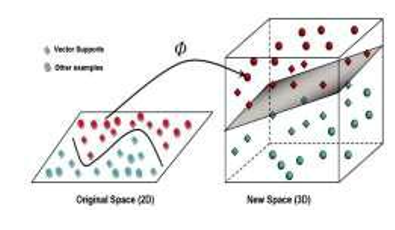
Note that here in this SVM the kernel is not fixed unlike in some signal transforms such as Discrete Fourier Transform. The SVM is a learning machine, and therefore it is based on imparting training, testing and performance evaluation, and validating that are common steps in every learning-procedure. Imparting training involves optimization of a convex-cost-function where there is no local minima to obscure the learning process. The testing is based on the model evaluation using the support vectors to classify a test dataset. Performance is based on error rate determination as test-set data-size tends to perpetuity (in continuous loop infinitely).
Executional performance
A two seconds data was recorded with a sampling frequency at the rate of twenty four thousand cycles per second (i.e., 24000 Hz) leading to 48,000 samples for each recording. Considering a trajectory of 13 records for each of the subcortical structures, the final trajectory is made up of 52 recordings and has a total of 2,496,000 samples. Then the final trajectory is divided into consecutive windows of 4,992 samples and for each of these windows we determined the six computational features obtaining a total of 500 instances (the signatures or patterns) per feature which is given in the following expression Fig 6.
The vector data-matrix is amassed so that the first 125-instances correspond to the STN, second 125 instances correspond to the SNpc, third 125 correspond to the TN, and the last 125-instances correspond to the Zi. The computational features (or Statistical indexes) of this study performed using Mat-Lab.
Results
The Gaussian and polynomial-kernels, with different parameter-values, were used to obtain the best-support-vector-machine-model. The best-model was the one which reached the highest-value of Kappa K-Statistic using n-fold cross-validation. The n-fold cross validation methodology allows us to obtain realistic errors using the complete database. Cross-validation consists of dividing the initial database into n-subsets and selecting n-1 subsets to generate the model. The subset not used in the process is used to compute the error. This procedure is repeated n-times, each time using a different-test-subset. Lastly, the error was computed by the arithmetic-mean of the n-partial-samples of errors. In our study, n=10. The Kappa K-statistic is one of the most widely-used parameters. This coefficient determines the degree of agreement between categorical variables. It is an efficient-parameter than the % of correctly classified examples (Precision) since K also takes into account those cases in which agreement occurs by chance. Thus, a K-value of 1.0 represents a statistically perfect-model while K=0 is the value expected for a model obtained by chance. According to some authors, 10K can be considered excellent for values greater than 0.75, good between 0.40 and 0.75 and poor for values below the 0.40. Other parameters were used to evaluate the models prediction capacity. Precision is one of these parameters, defined as the proportion of examples correctly classified divided by all the elements that were classified for this class. Evoke (or recall) is defined as the proportion of examples correctly classified divided by all elements of this class. F-Measure is the harmonic mean of accuracy (or precision) and Recall. Values of these parameters close to one indicate good exactness in the predictions for each-class. To obtain a best model, different values of the complexity parameter C were tested with C = 10k where k-values were from –3 to 3 with a step of 0.2 (31 values). Also, different values of the exponent (e) for the polynomial kernel and gamma (g) for the Gaussian kernel were used. In particular, e values were 1, 2 and 3, and g values were 0.005, 0.01, 0.02, 0.03, 0.05 and 0.1. Therefore, the number of models trained with polynomial kernel was ninety three 93 (C x e= 31x3 =) and with Gaussian kernel it was 186. The results of the best model obtained with polynomial kernel, C = 10.0 and e = 1 are shown in Figure 6. In the above Figure 6, it is possible to observe that the SVM model was able to classify correctly 497 (99%) from a total of 500 instances. Parameters like accuracy or evoke, with values over 0.99 for the four classes (STN, SNpc, TN, and Zi), would be considered exceptional. Also, the ROC-Areas values were very high. Finally, in the confusion matrix we can observe that only three cases were not classified correctly and according to K, the best model obtained was first-rate (K = 0.992) and is exceptional.
Conclusions
The success of the post operative prognostic and/or clinical outcome of deep brain stimulation subthalamic nucleus (DBS-STN) surgery depends predominantly on the accurate medley of subjects (i.e., patients) and on optimal targeting, which is based on signal and neuro imaging modalities and techniques and intra operative electrophysiological recordings. Surgery is usually performed while the patient is awake, as MER is not altered by local anesthesia and clinical intra operative assessment can be carried out by evaluating possible adverse effects and improvement in Parkinsonian signs during intra operative macro and micro stimuli techniques as well. Neuroprotection is clearly the new frontier in movement disorder research and therapy. The long-term clinical studies have so far failed to prove that high-frequency stimulation has been able to slow down the evolution of the disease. So-called ‘earlystim’ clinical protocols have only proven that it was safe to stimulate STN much earlier than it was so far accepted. At the experimental level, we have published that in MPTP-treated monkeys, high-frequency stimulation of the STN could protect neurons in the substantia nigra. To test this hypothesis in humans, one would need to perform STN stimulation at the very beginning of the disease, which is not easily ethically sustainable given the surgical risk, even if low, in patients who are still minimally impaired by the disease. There have been so many advancements in computing capabilities; big data management; miniaturization of electronics, devices and batteries; and new sources of energy compatible with implantation of biological devices and fuel cells. More recently, there has been an explosion of biological imaging at the nano level as well as whole-brain imaging. It is impossible to generate a reasonable picture of future technological development without being sure to be wrong. The consequence of that is that when building projects and setting new protocols as well as imagining new tools and devices, we should be confident that what has not yet been developed will eventually be created. This work presented the results of our basis study and groundwork study making use of two methodologies for the characterization of sub-cortical structures from Parkinson’s disease patients. The results obtained show how the computational features applied in this work a MER from Parkinson’s patients are able to extract, quantify and differentiate the information contained of the neural activity between the subcortical structures. After obtaining the computational-features for each sub-cortical-structures, and using them on the SVM algorithm for classification, the results showed that SVM was be able to classify acceptably 497 (99%) from the 500 instances. Lastly, various parameters to evaluate the prediction capacity of the model were obtained, indicating good accuracy in the predictions for each sub-cortical-structure (the class). Since the neural activity varies from one structure to another within the brain, the possibility of targeting errors to DBS necessitates the use of some form of intraoperative electro-neuro-physiologic monitoring to confirm the exact-targeting during-surgery, so that the use of methodologies from data mining like the one presented in this work could be used in the process of localization of the sub cortical structures and mainly the sub thalamic nucleus (STN) for induced neuro stimulus. Future studies include modeling of PD which include two kinds - black-box and gray-box. Generally, in the black-box, irrespective of the finite-number of processes of system-information, merely the feature-symptom is measured as the corresponding-output. Such-models enhance our information and understanding of the disease behavior-performance and the disease-signs and cardinal feature-manifestations. The gray-box deem and reflect on the concerned structures within the features manifestation and the concluding disease-features also be able to successfully keep instant-point and gainful for the neuroscientists plus aid them choose-accept suitable management restorative-mechanisms in the midst of every credible choices. Some attempts are made to examine some investigation on P D computational analysis. Then, P D models are examined. Lastly, the findings of employing such models are offered slightly.
Acknowledgments
Author wishes to thank the DST-CSRI, Dept of Science & Technology, Ministry of Science & Technology, Government of India, New Delhi for the Grant No……



